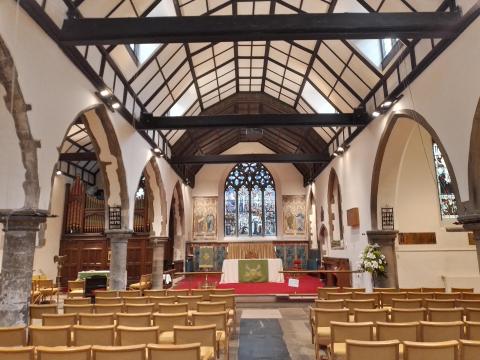St Paul Without the Walls, Canterbury

The church of St Paul Without the Walls at Canterbury is a mixture of thirteenth and nineteenth century construction. The older., medieval arches and piers can be seen on the left, their Victorian counterparts on the right. The nave roof is unusual, however, for being seven-sided, resembling the inside of a half-barrel.
The number seven is significant in scripture, bespeaking divine perfection and completion, and it plays a prominent role in its final book, Revelation, as well as elsewhere. Other numbers are important, too, such as forty, and three, but seven seems to be the most obviously important. Architects do nothing without meticulous thought, at least one hopes this is the case, and the seven-sided roof of St Paul’s is a pleasing theological flourish.
Churches, whatever their denominational label and architectural style, are seldom perfect, complete, and, in some cases, anywhere close to divine. Readers can search St Paul without the Walls’ website and decide for themselves if this congregation and its clergy resonate 'God’s seven' or 'man’s six'. Even those churches of more solidly evangelical bent leave much to be desired. Until she is glorified, the bride of Christ will be incomplete, imperfect and seemingly un-united to Him. When He comes for her, and therefore for us, we shall be utterly fulfilled and whole.
Behold, I show you a secret thing, We shall not all sleep, but we shall all be changed, in a moment, in the twinkling of an eye at the last trumpet: for the trumpet shall blow, and the dead shall be raised up incorruptible, and we shall be changed. For this corruptible must put on incorruption: and this mortal must put on immortality. 1 Corinthians 15:51-53, Geneva Bible
- Log in to post comments


 Sunday Worship 10.45am & 6.00pm
Sunday Worship 10.45am & 6.00pm